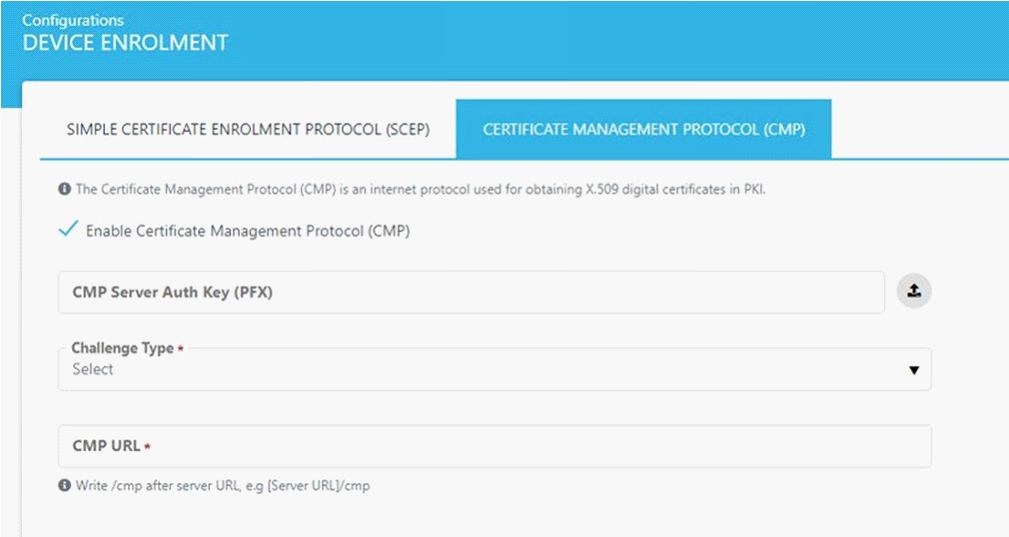Certificate Management Protocol (CMP)
A public key certificate is a document which uses a digital signature to bind a public key with an identity information, such as the name of a person or organisation, address, etc. The certificate can be used to verify that a public key belongs to an individual. Certificate Management Protocol (CMP) is an internet protocol standardised by the Internet Engineering Task Force (IETF) used for obtaining X.509 digital certificates in a PKI. CMP is a rich featured and flexible protocol and supports any type of cryptography.
ADSS Web RA provides this feature to use CMP so that an entity can obtain certificates from a CA, request updates for them, and also get them revoked.
How it works?
CMP request can be catered in two ways, it is MAC-based and signature-based.
Enrolment and usage of CMP generally follows this work flow:
MAC-based CMP Request:
- ADSS Web RA will generate a shared secret and communicate with client/End Entity in a secure manner.
- Client will use the shared secret to calculate the MAC over CMP Request and send it to Web RA. ADSS Web RA will verify the CMP request using the shared secret. If the request is verified, ADSS Web RA will send the request to the CA (ADSS Server).
- CA (ADSS Server) will generate certificate and return to Web RA.
- ADSS Web RA will then use shared secret to protect the certificate response and return it to the client.
Signature-based CMP Request:
- Obtain a copy of the Certificate Authority (CA) certificate and validate it.
- The CMP request signature is computed on the client end and is sent to Web RA.
- ADSS Web RA will verify the CMP message with client's public key and send it to the CA (ADSS Server) .
- CA will generate requested certificate and return it to Web RA.
- ADSS Web RA will use server certificate for protecting CMP message and return it to the client. The client will verify the response using the trusted server certificate.
The device enrolment in ADSS Web RA requires the following configurations: (Find screenshot at the end)
- Device Enrolment configuration is done to enable the CMP service in the Web RA
- The configuration requires CMP Server PFX and its password, CMP Server Certificate, CMP Server ADSS Web RA URL and Challenge type
- ADSS Web RA CMP Server starts working after the configurations by processing the requests coming from the infrastructure devices
Certificate Management Protocol
|
Field |
Description |
|
Enable Certificate Management Protocol (CMP) |
Tick this checkbox to enable the CMP functionality |
|
CMP Server Encryption Auth Key (PFX) |
When the GetCACert request is issued by the devices, the certificate is returned to the device. This certificate will be used to encrypt the communication between the device and the RA application. Note: Once the CMP option is enabled, it will be available for every user in each enterprise and they can use CMP to get the device certificates from the ADSS Web RA Web portal |
|
CMP Server Encryption Auth Key (PFX) Password |
Password to decrypt the key so that application can use this key |
|
Challenge Type |
The CMP provides an additional layer of security using the challenge value. The device puts this challenge in the device CSR and the ADSS Web RA verifies this challenge as part of request validation. There are three challenge password options available as following:
|
|
CMP URL |
This is the CMP URL that the devices will use to communicate with the Web RA |

